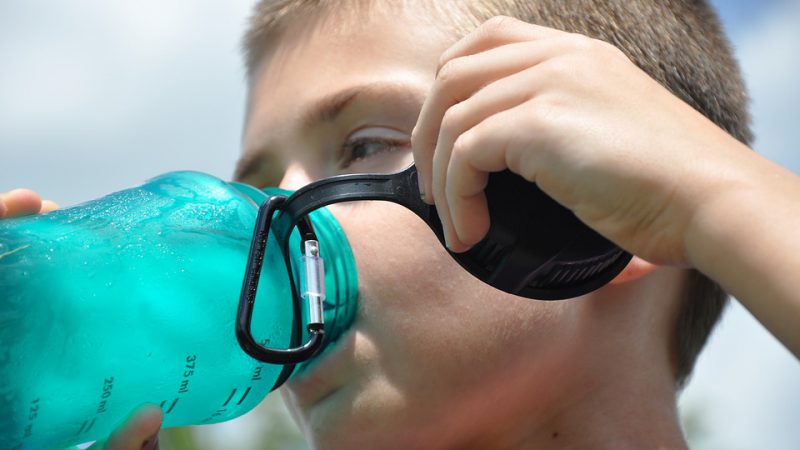More than 32 Million tons of plastic waste end up in our environment per year. Most of it is non-degradable polyethylene, produced from about 8% of the global mineral oil resources. Researchers of the Austrian Centre of Industrial Biotechnology develop new biotechnological solutions to substitute critical processes. In the EU-funded project ROBOX, acib’s partners Uni Maastricht and Chemstream from Belgium have developed an approach to produce polyethylene biologically and sustainably from plant extracts. Enzyme-engineering can help to produce plastic without the use of harmful solvents.
Due to its high flexibility and durability, the polymer LDPE (Low Density Polyethylene) is the most abundant plastic worldwide and is applied as protective layer, parts of plastic bottles and packing material for food. The transparent thermoplastic material is produced from petrochemical feedstocks and has officially been classified as dangerous for humans and the environment. Interaction with air, water or certain liquids might result in the escape of substances added during the production process such as phthalates (plasticizers) and other additives or the release of acetaldehyde.
Biopolymers – lots of advantages but hardly ever used
In order to protect mankind and nature and to prevent further damage to the environment, new biopolymers from renewable resources such as plant extracts are being developed. However, although they are sustainable, eco-friendly and have other special beneficial qualities, commonly their crystalline structure prevents efficient processing – this is the main reason why the earlier bioploymers have hardly been used by the industry so far.
Project ROBOX – Biopolymers with better qualities
In the framework of the EU-funded project ROBOX, an international team of researchers has developed a promising approach for replacing the plastic LDPE – Low Density Polyethylene – with a plant-based w–PDL. A paper published in “Polymer Chemistry” shows that the directed application of plant-based co-monomers such as δ-undecalactone (δ-UDL) can considerably enhance solubility and processability of the produced co-polymer.
Eco-friendly binding agents – new processing methods
As a rule, water-repellent (hydrophobic) coatings are applied as emulsions or suspensions, which are supposed to show specific qualities after settling, dependent on the respective field of application. A dispersing agent is needed in order to avoid phase separation and to ensure colloidal stability. Through directed co-polymerization of ω-PDL with δ-UDL the researchers were able to produce a polymer with superior properties.
The exact composition and structure of the biopolymer was analyzed using MALDI-ToF MS (Matrix assisted laser-desorption time of flight mass spectrometry). The measurements confirmed the low crystallinity of the new co-polymer and the definition of the so-called “Hansen solubility spheres” shows broader solubility ranges. While pure ω-PDL polymers are soluble in chloroform only, the newly developed co-polymers from ω-PDL with δ-UDL can also be dissolved in other reaction solvents such as various non-toxic alcohols (e.g. ethanol).
Enzymes –eco-friendly processes for producing polyester precursors
Besides eco-friendliness and the enhancement of product qualities of biopolymers, sustainable production processes are key interests for the Austrian Centre of Industrial Biotechnology and its partners in the EU-funded project ROBOX. One example is the so-called “Baeyer-Villiger-Oxidation“, which has been used in organic chemistry for more than 100 years to transform ketones into esters. The chemical process for the production of polyester precursors is mainly harmful because it includes the use of halogenated oxidants and ecologically harmful solvents.
In the study „Application of a thermostable Baeyer–Villiger monooxygenase for the synthesis of branched polyester precursors“, recently published in Journal of Chemical Technology and Biotechnology, the ROBOX-researchers show how to use an enzyme called Baeyer-Villiger-Monooxygenase (BVMO) as a biological alternative for performing the reaction to give δ-UDL under mild reaction conditions, ambient temperature and in aqueous systems. In this case, a BVMO of the bacterium „Thermocrispum municipale“, found on a dumping ground in Germany, was used. The enzyme proved to be very regioselective and enables directed oxidation processes at specific sites of the molecules used which improves the properties of the polymers produced for several applications.
Economic application of polyester compounds
The use of this enzyme facilitated a biocatalytic oxidation reaction to transform the starting material 3,3,5-trimethyl cyclohexanone (which is readily available from the natural product isophorone) into epsilon-caprolactones, which are building blocks of specialty plastics. The ROBOX project aims to develop processes to make them available on an industrial scale. Thus, it paves the way for a future application of BVMOs for the industrial production of lactones as building blocks for certain polyester compounds.
From enzyme class to product – ROBOX makes biotechnological innovation possible
The research carried out in the EU-funded project ROBOX once more shows the development chain from the discovery of new biocatalyst to their application on industrial scale. Those achievements are for the benefit of our environment and for everyday life.
“The research for this work has received funding from the European Union (EU) project ROBOX (grant agreement n° 635734) under EU’s Horizon 2020 Programme Research and Innovation actions H2020-LEIT BIO-2014-1” Any statements herein reflect only the author’s views. The European Union is not liable for any use that may be made of the information contained herein.”
Picture credits: Pixabay
